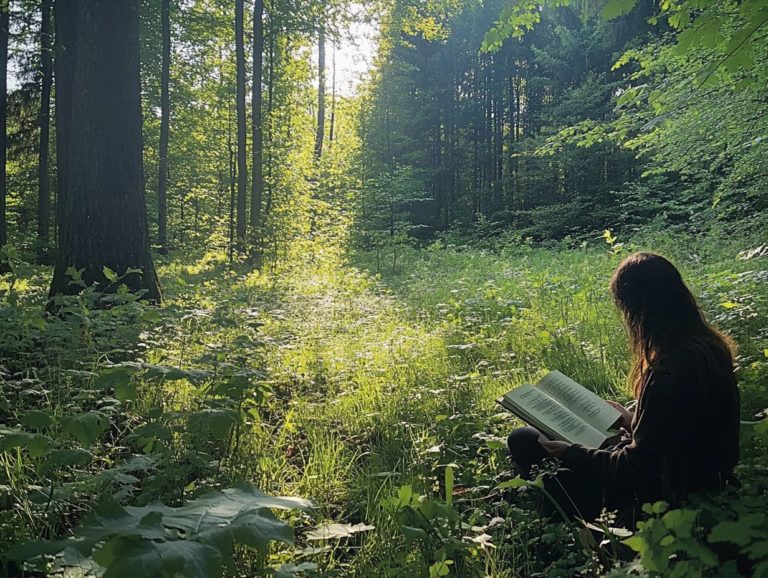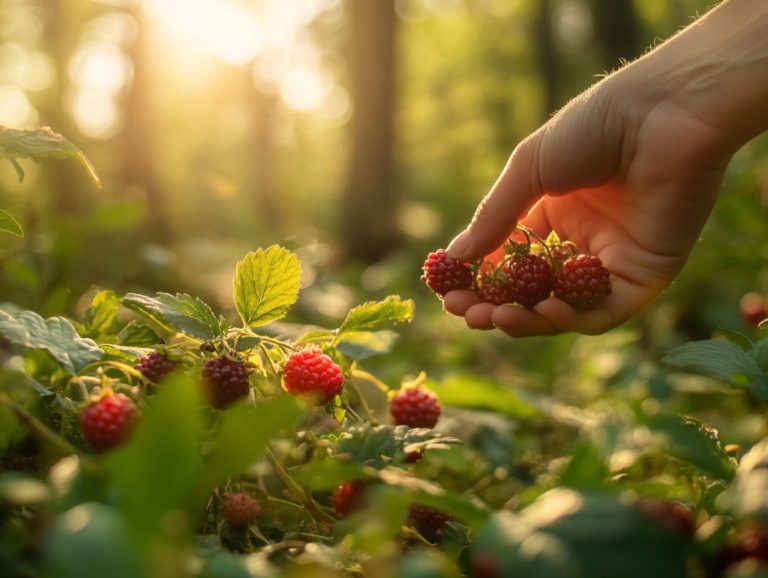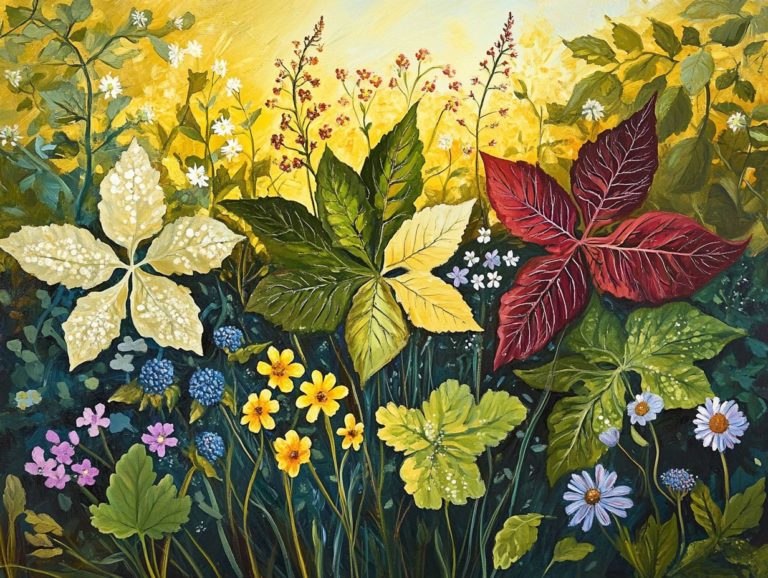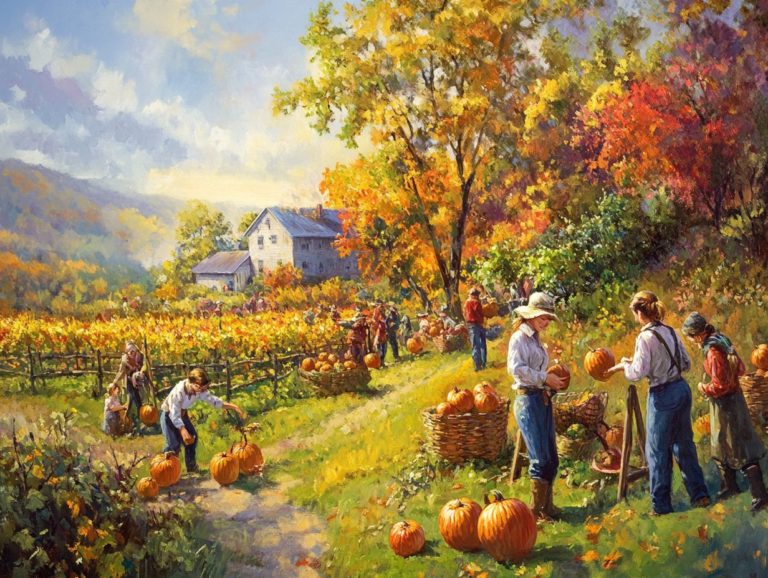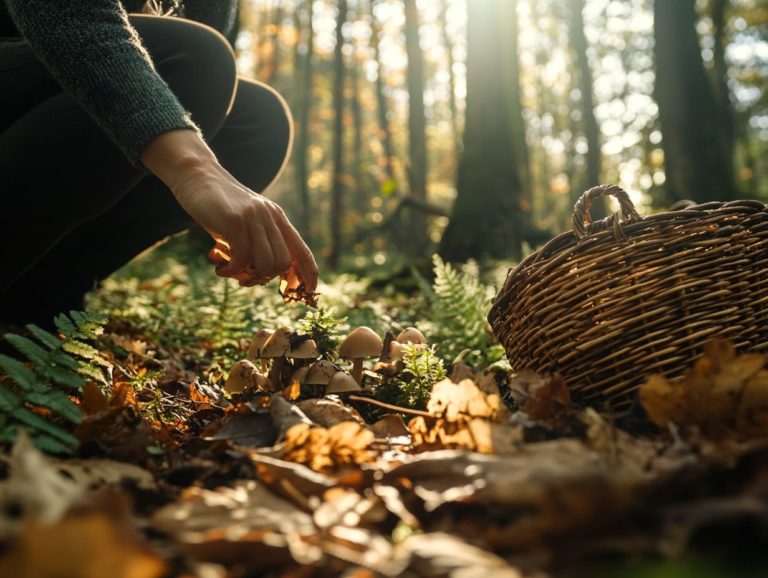Edible Flowers: Seasonal Foraging Guide
Edible flowers are a delightful yet often overlooked gem in the realm of foraging. They bring vibrant colors and unique flavors to your meals while offering a wealth of nutritional benefits.
Get ready to dive into this guide that will help you identify safe, edible varieties, provide seasonal foraging tips, and underscore the significance of responsible harvesting practices.
Whether you re a culinary enthusiast or a nature lover, this article is designed to inspire you to explore the beauty and deliciousness of edible flowers.
Contents
Key Takeaways:
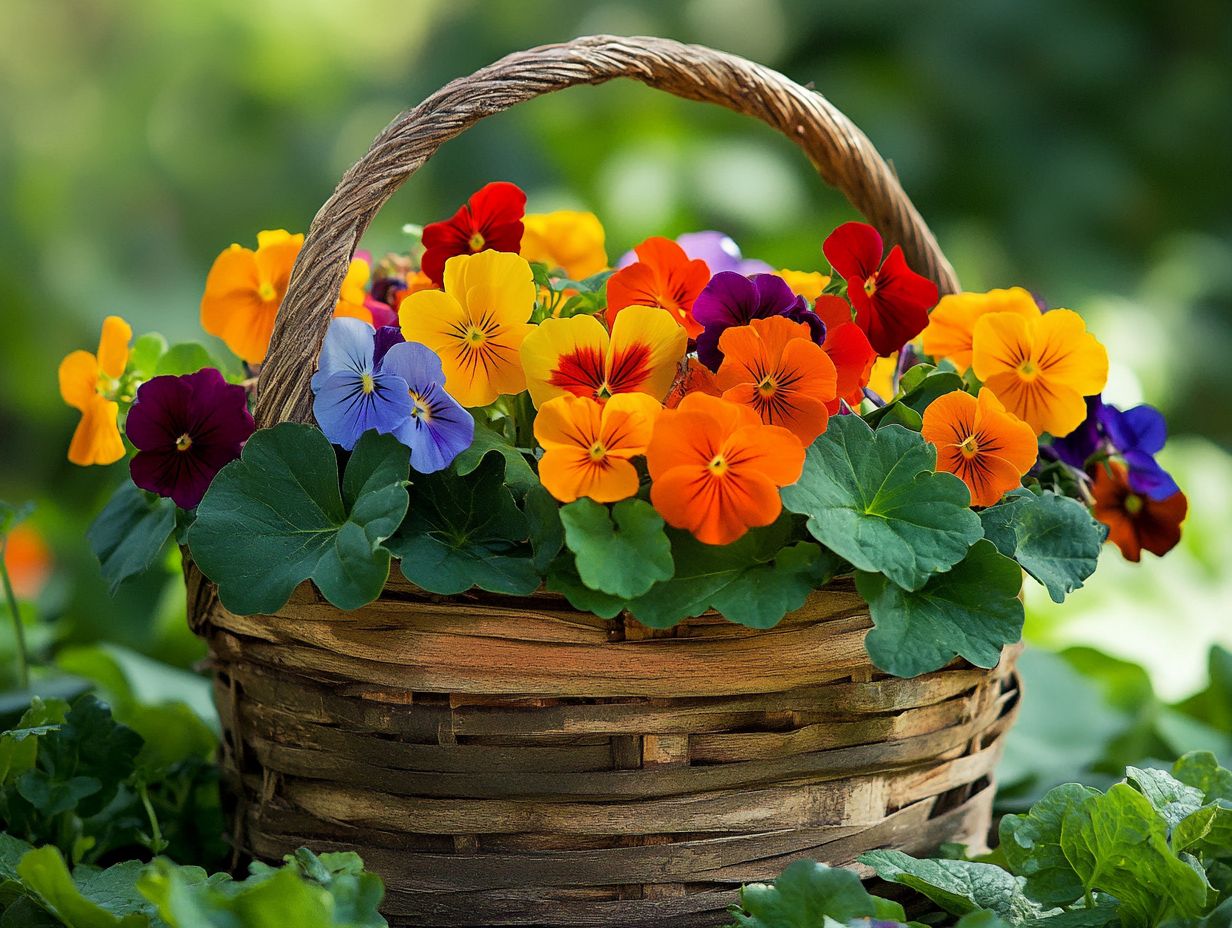
- Edible flowers offer a variety of nutritional and culinary benefits, making them a unique and tasty addition to any meal.
- It is important to educate yourself on how to properly identify and avoid poisonous flowers when foraging for edibles.
- Foraging for edible flowers can be done throughout the year, with different blooms available in each season. Follow a seasonal foraging guide for the best results.
What are Edible Flowers?
Edible flowers are the delightful blossoms of various plants that you can safely enjoy, enhancing your meals with their unique flavors, textures, and vibrant hues. Many of these flowers, like common milkweed and Virginia bluebells, elevate the visual appeal of your dishes while offering nutritional benefits.
As spring short-lived flowers like wild roses and day lilies begin to bloom, they invite you to explore their edible potential and incorporate them into seasonal recipes that celebrate the bounty of nature.
These blossoms can transform everything from salads to desserts, providing unexpected bursts of flavor. For instance, day lilies are known for their crunchy texture and subtly sweet flavor, while common milkweed boasts a rich supply of vitamins A and C.
Using edible flowers is becoming more popular, not just for their culinary allure but also for their health benefits; many varieties are packed with antioxidants and nutrients that contribute to your overall well-being.
By embracing these natural ingredients, you can discover innovative ways to blend creativity with nutrition, turning ordinary meals into extraordinary culinary experiences.
Why Foraging for Edible Flowers is Great!
Foraging for edible flowers presents a wealth of benefits that go far beyond merely elevating your meals with distinctive flavors. It also fosters a connection with nature, champions sustainability, and nurtures a deep appreciation for local biodiversity.
Engaging in this practice opens the door to a treasure trove of wild food options, such as black locust flowers, bee balm, and Virginia waterleaf. It also offers a chance to explore the nutritional value these blossoms bring to your table.
The health benefits of integrating edible flowers into your diet are abundant, providing essential vitamins and minerals that enhance your overall well-being.
Nutritional and Culinary Uses
Edible flowers are not only a feast for the eyes; they also bring a wealth of nutritional benefits to your table. Imagine enhancing your dishes with flowers like dandelions and jewelweed, which add unique flavors to salads and teas. Meanwhile, bee balm and scarlet bee balm can be infused to create aromatic dishes or drinks that elevate your culinary experience.
Incorporating these blossoms into your meals offers a multitude of advantages. For instance, dandelions are a powerhouse of vitamins A, C, and K, along with essential antioxidants that bolster your immune health. Jewelweed, with its anti-inflammatory properties, can be steeped into soothing herbal teas. The vibrant petals of bee balm not only provide a refreshing taste but are also loaded with vitamins and minerals that support digestion.
In your culinary endeavors, these flowers can be artfully sprinkled over desserts or used as garnishes for main dishes, showcasing their stunning beauty and impressive nutritional value.
Safety Considerations
Your safety should always come first when foraging for edible flowers. Not every bloom is safe to eat; some can cause unpleasant reactions or serious health risks.
It’s essential to understand how to tell edible flowers apart from their toxic counterparts. Familiarizing yourself with common toxic varieties, like creeping bellflowers and dead nettles, helps ensure your foraging experience is enjoyable and safe.
Identifying and Avoiding Poisonous Flowers
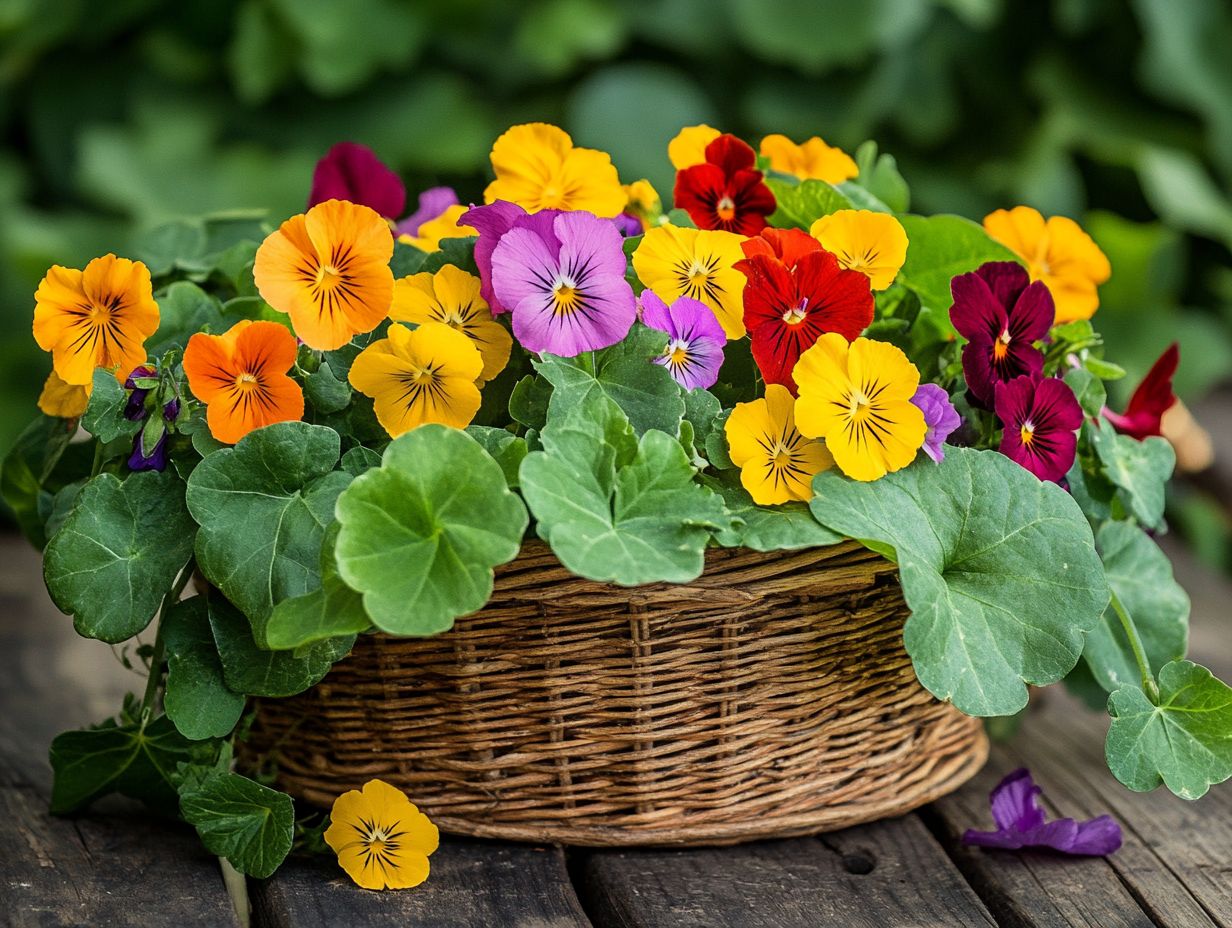
Identifying poisonous flowers is crucial for safe foraging. Some flowers look very similar to edible ones, which can lead to accidentally eating harmful species.
Learn the key characteristics of edible flowers, such as common milkweed and Virginia bluebells. This knowledge helps you distinguish them from toxic varieties like wild carrot and oxeye daisy.
Pay attention to visual cues. Edible flowers often have vibrant colors and unique shapes, while many poisonous varieties appear dull and uninviting.
Focus on details like leaf shape, smell, and growth patterns. For example, the beautiful monkshood may be eye-catching, but its bell-shaped blooms signal danger for inexperienced foragers.
Become familiar with the habitats where these plants grow. This knowledge enhances your outdoor experiences and reduces risks when foraging.
Foraging for Edible Flowers by Season
Foraging for edible flowers is an exciting adventure that changes with the seasons. Each time of year invites you to discover a variety of blooms, and you can learn more about this process in foraging for edible flowers: a how-to.
In spring, you might find delicate spring beauties and toothworts. To learn more about what to look for, check out seasonal edibles: what to forage in spring. Summer reveals vibrant bee balm and wild roses, transforming wild food searching into a seasonal exploration filled with flavor.
As fall arrives, flowers like redbud and wild violet offer even more delightful options. Winter brings dried blooms with rich histories to uncover.
Spring Foraging Guide
Spring foraging allows you to connect with nature as the landscape revives. Discover the best edible flowers for foraging that add fresh flavors and colors to your dishes.
Look for spring blooms like Virginia bluebells and trout lilies, as well as wild roses that enhance salads, desserts, and teas. Breathe in the enchanting scents of honeysuckle and elderflowers, perfect for syrups and refreshing drinks.
Don t overlook dandelion blossoms; they’re often dismissed but packed with nutrients. Transform them into tasty fritters or lively additions to your spring herbal tea.
Familiarizing yourself with these blossoms enriches your culinary repertoire and deepens your appreciation for nature’s seasonal treasures.
Summer Foraging Guide
Summer foraging unveils a delightful array of possibilities as the warm weather ushers in a bounty of edible flowers. For those interested in exploring this further, finding edibles in your local area can be ideal for enhancing your culinary creations and elevating seasonal dishes.
Flowers like bee balm and black locust abound at this time, offering unique flavors that can transform everything from salads to desserts. Vibrant wild mustard flowers add a burst of color and zing to your summer feasts.
As you wander through meadows and gardens, you may discover the delicate blossoms of nasturtium. They not only bring a peppery kick but also lend stunning visual appeal to any plate.
The fragrant elderflower can be crafted into syrups or infused into cordials, imparting a delightful floral note to your beverages.
Each of these options invites your culinary creativity, allowing you to experiment with flavors and aesthetics. This summer, your menus can be not only delicious but also a feast for the eyes, capturing the very essence of the season.
Fall Foraging Guide
Fall foraging presents a remarkable opportunity for you to gather a selection of edible flowers. These can enhance the depth and flavor of your autumn dishes as the landscape bursts into vibrant hues, especially if you refer to a seasonal guide foraging through the year.
During this enchanting season, you can harvest edible blooms like redbud flowers and sochan, which are excellent additions to your cooking options. For more ideas, check out seasonal edibles: a guide to locally sourced foods.
Vetch can also add a delightful touch to salads or serve as a charming garnish, connecting you to nature’s seasonal bounty.
These blossoms do more than just beautify your plate; they introduce a spectrum of tastes from the sweet, delicate notes of redbud to the strong taste of sochan. Engaging in this seasonal hunt allows you to form a deeper connection with your environment, as you discover hidden gems nestled within your local habitats.
Whether you choose to infuse them into oils, brew them in teas, or simply sprinkle them atop your dishes, these flowers can elevate your everyday meals into something truly extraordinary. As a foraging enthusiast, you ll find countless ways these floral ingredients can transform traditional fall recipes, inviting you to fully embrace the flavors and fragrances that this season has to offer.
Winter Foraging Guide

Winter foraging is an exciting adventure waiting for you! It presents a unique challenge and opportunity to uncover hidden culinary treasures among dried blooms and resilient plants, even during the colder months.
While the abundance of fresh flowers may diminish, you can still find value in dried edible flowers and plants that have held onto their flavor. Don’t miss the chance to use these ingredients in your favorite teas, soups, or as stunning garnishes!
This time of year invites you to explore how the delicate flavors of these dried botanicals can elevate your dishes and beverages. They transform simple meals into special meals.
From vibrant hibiscus to fragrant chamomile, each bloom tells a story of resilience against the elements. You can experiment with new flavor profiles that add warmth to your winter menu.
The nutritional benefits of these plants packed with antioxidants and vitamins not only enhance taste but also contribute to a healthier approach to seasonal eating. This practice enriches your culinary repertoire while embracing the beauty of nature’s bounty.
Tips for Sustainable Foraging
Sustainable foraging is crucial for safeguarding the delicate ecosystems that provide us with wild food. This ensures that future generations can revel in the richness of nature’s bounty.
By embracing ethical harvesting techniques like leaving sufficient blooms for pollinators and taking only what you truly need you not only contribute to the well-being of the environment but also elevate your foraging experience.
This mindful approach deepens your connection to nature and its intricate cycles, enriching both your journey and the world around you.
Leave No Trace and Ethical Harvesting
Adhering to Leave No Trace principles guidelines to protect nature while foraging helps minimize your environmental impact. This mindful approach preserves the natural habitats of wild food sources for years to come. It not only protects local flora and fauna but also fosters a deeper connection to the earth.
As a foraging enthusiast, carrying a field guide to accurately identify edible plants is essential for responsible harvesting. Consider these practical tips:
- Use only clean, sharp tools to minimize damage to vegetation.
- Avoid overharvesting in any particular area.
Respecting the land and its resources contributes to ecosystem sustainability, allowing future generations to experience the joy and benefits of foraging. Understanding and implementing these practices shows that your choices today significantly impact the environment tomorrow.
Frequently Asked Questions
What are edible flowers?
Edible flowers are safe for human consumption and can be used in cooking or as garnishes for dishes. They add unique flavors and visual appeal.
What is a seasonal foraging guide?
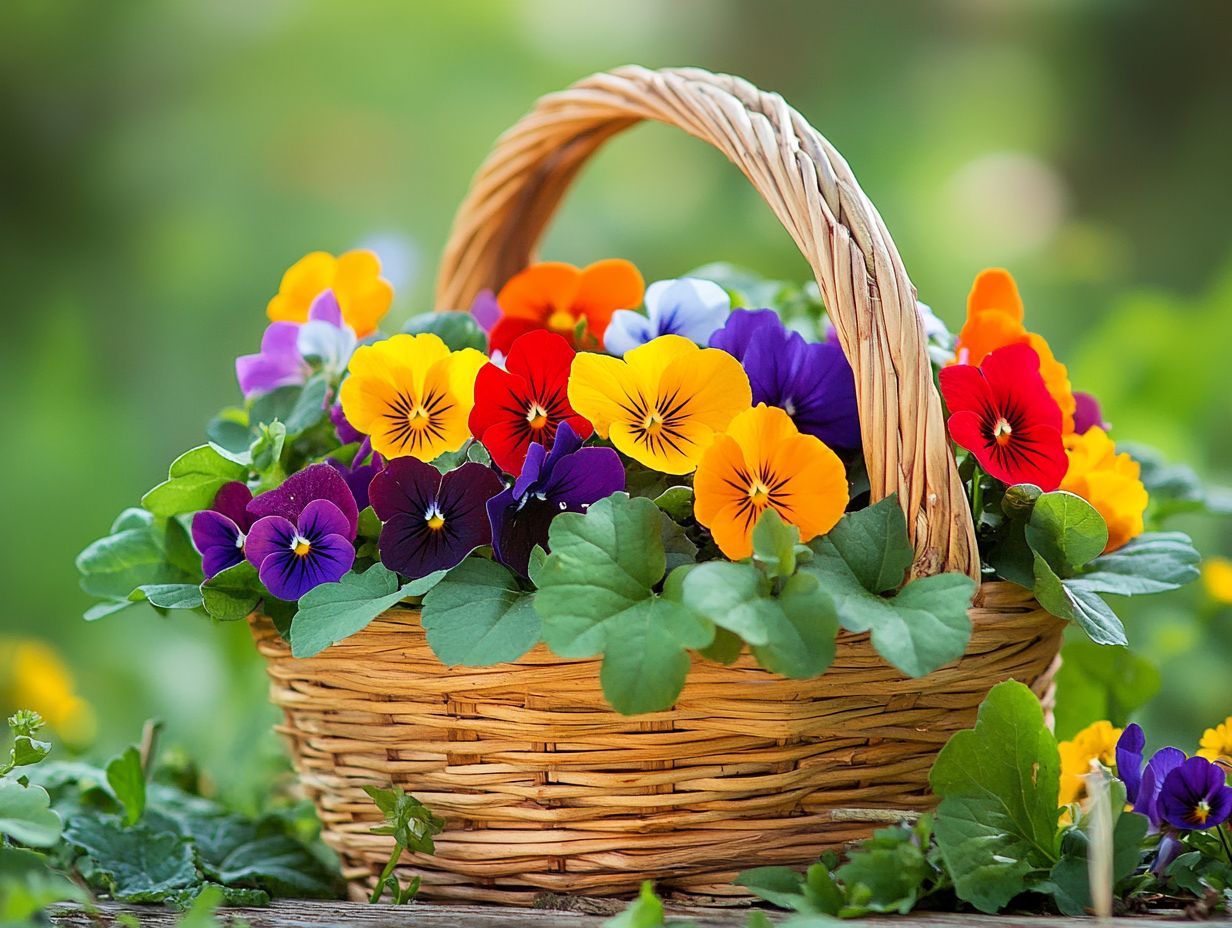
A seasonal foraging guide lists the types of edible flowers in season during specific times of the year. This resource, along with finding wild herbs, helps identify which flowers are available for consumption at any given time.
Are all flowers edible?
No, not all flowers are safe to eat. Some may be toxic or cause allergic reactions. Proper identification is crucial before consuming any flower.
What is the best way to forage for edible flowers?
Thorough research to familiarize yourself with edible flowers in your area is the best way to forage. Only forage in areas free from pollutants and pesticides.
Can edible flowers be used in any dish?
Yes, edible flowers can enhance a variety of dishes, including salads, desserts, cocktails, and main courses. Use them sparingly to avoid overpowering the dish s flavor.
Can edible flowers be preserved for later use?
Yes, you can preserve edible flowers by drying them or infusing them in sugar or oil. This allows you to enjoy their flavors even when they are out of season.
Join the foraging movement today and discover the joy of foraging!

